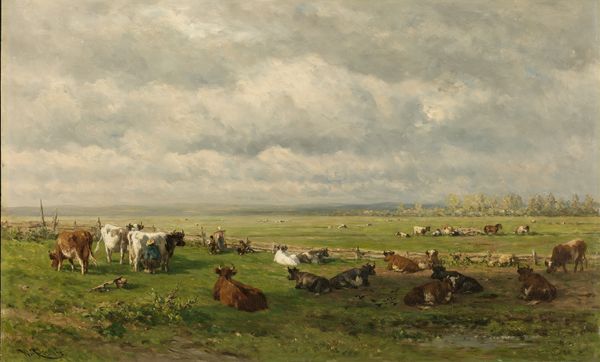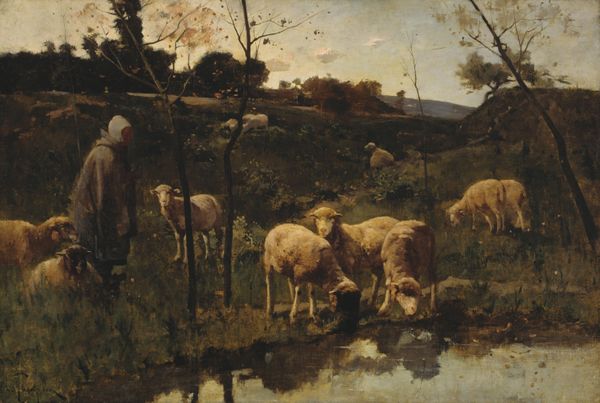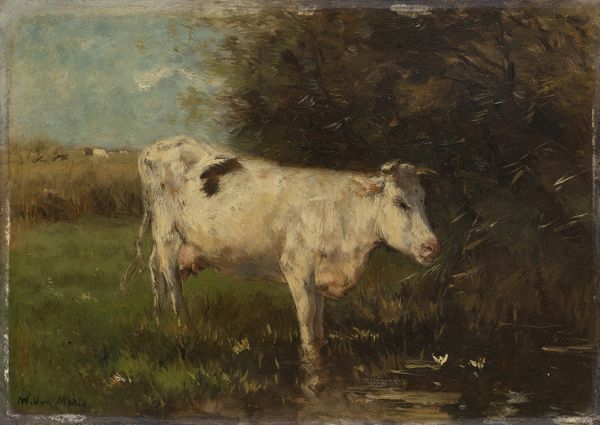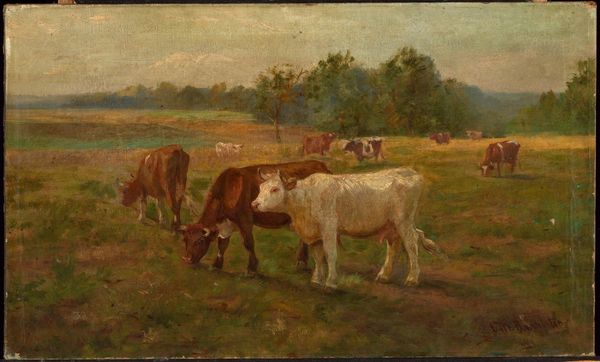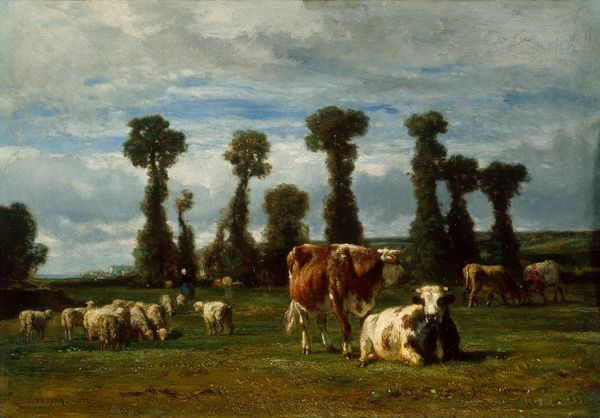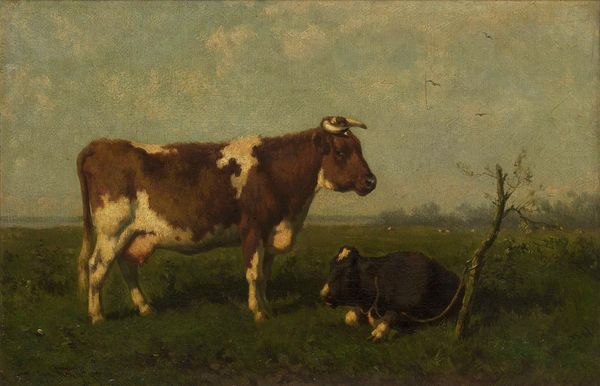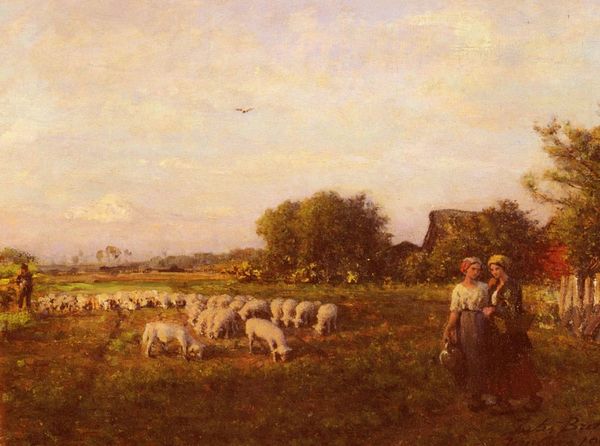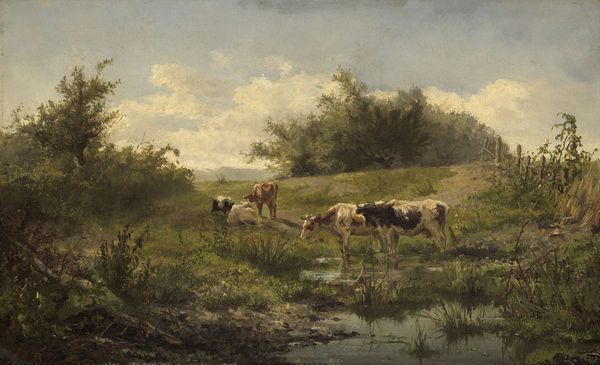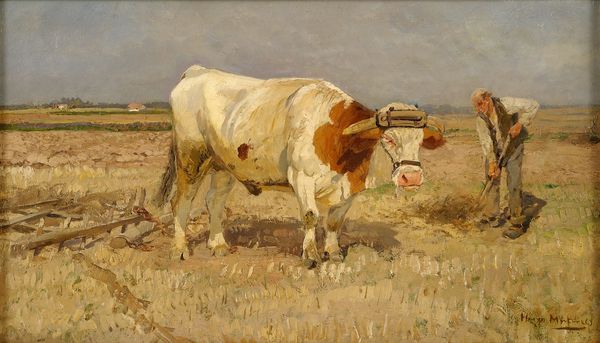
painting, oil-paint
#
dutch-golden-age
#
painting
#
oil-paint
#
landscape
#
oil painting
#
genre-painting
#
realism
Dimensions: height 171 cm, width 115 cm, depth 6.5 cm
Copyright: Rijks Museum: Open Domain
Editor: This painting, "De melkbocht" by Anton Mauve, made with oil paints sometime between 1870 and 1888… it feels so grounded, almost heavy with the materiality of the earth. What’s your take? Curator: It's fascinating how Mauve utilizes oil paint here, isn't it? Consider the labor embedded within. Grinding pigments, mixing the oil, applying brushstroke after brushstroke – it’s a process intensely connected to physical exertion. What can you tell me about the social context? Editor: Well, looking at the time, this was a period of significant agricultural change, right? With increased mechanization but also persistent rural poverty. I see the painting reflecting that struggle, that link to hard work. Curator: Exactly. And look at the way Mauve renders the cattle. They're not idealized, they’re working animals, part of the process. Think about milk production at the time, the hands involved. It emphasizes labor's presence in everyday objects like milk. Does the subdued palette speak to a certain socio-economic reality to you? Editor: Absolutely, the colors don’t seem celebratory. It highlights the realities and routines, I’d guess. So, instead of an idealized landscape, we're getting a view tied to work, raw materials, even consumption? Curator: Precisely. The 'melkbocht'— the milk bend—becomes a focal point. Mauve elevates a scene of labor and livestock into a moment of artistic reflection, linking the viewer to the land's processes. The artist’s labor mirroring the farmer's in some way, wouldn't you agree? Editor: I hadn't thought about the labor behind creating the piece, mirroring that of the farmer, but that makes a lot of sense. Thanks for expanding my perspective!
Comments
No comments
Be the first to comment and join the conversation on the ultimate creative platform.



